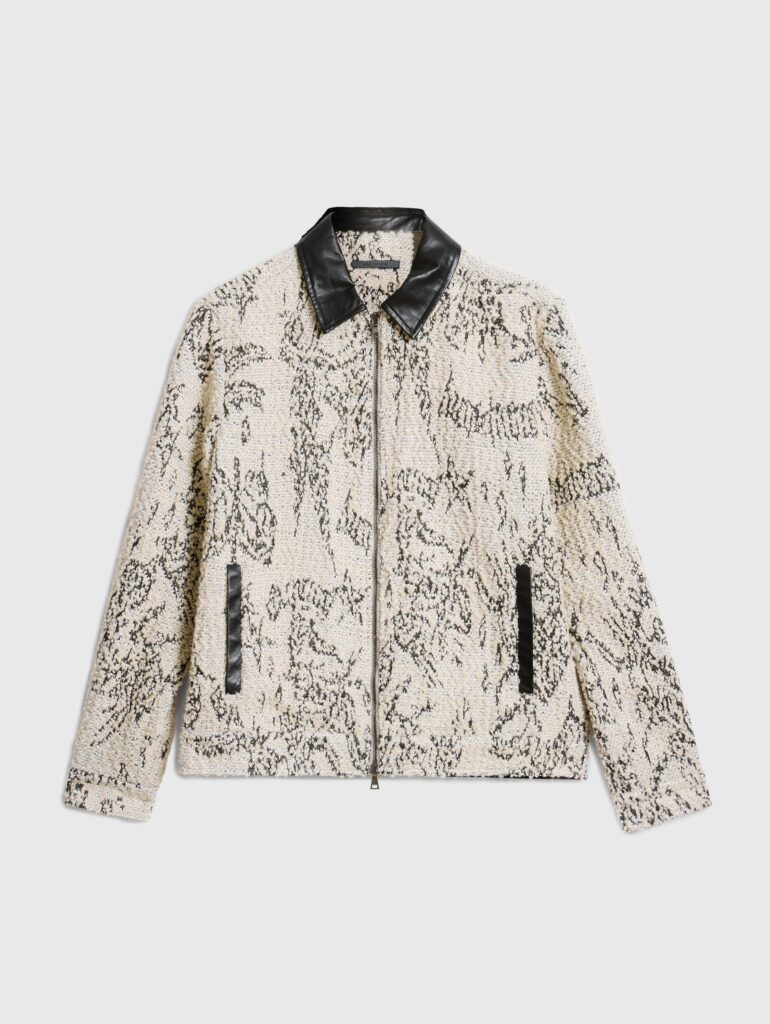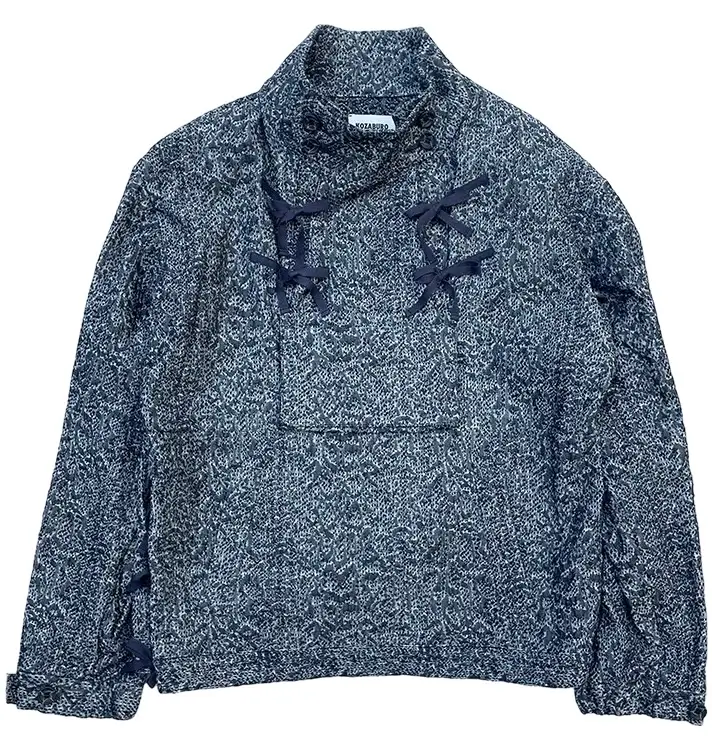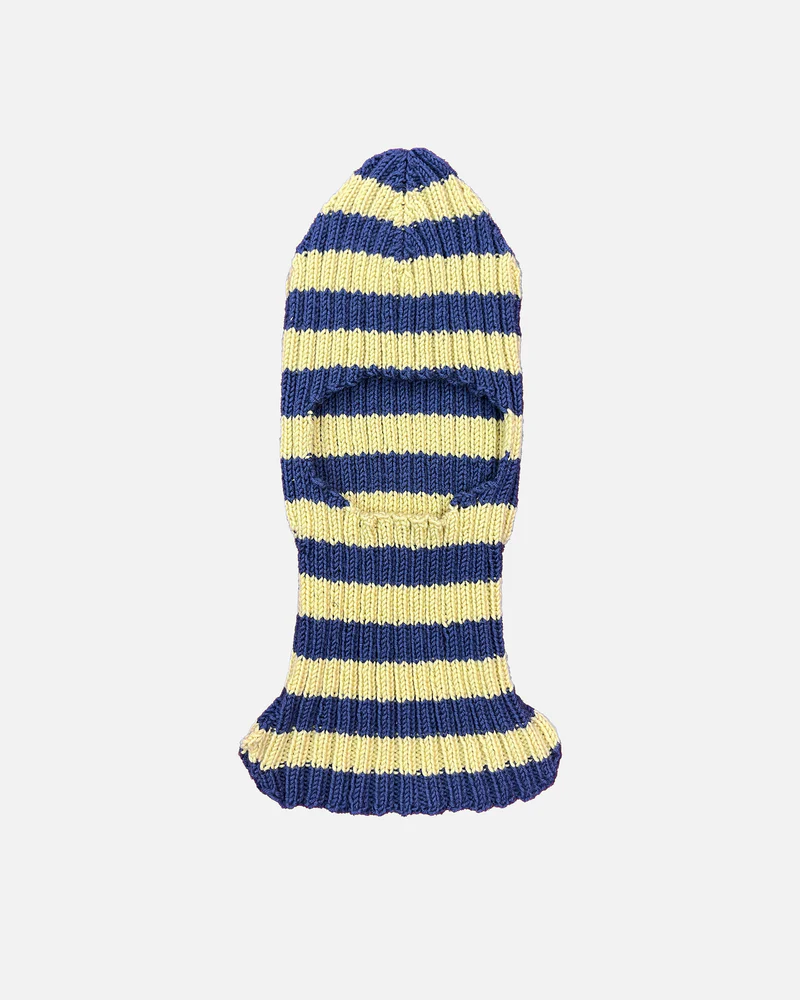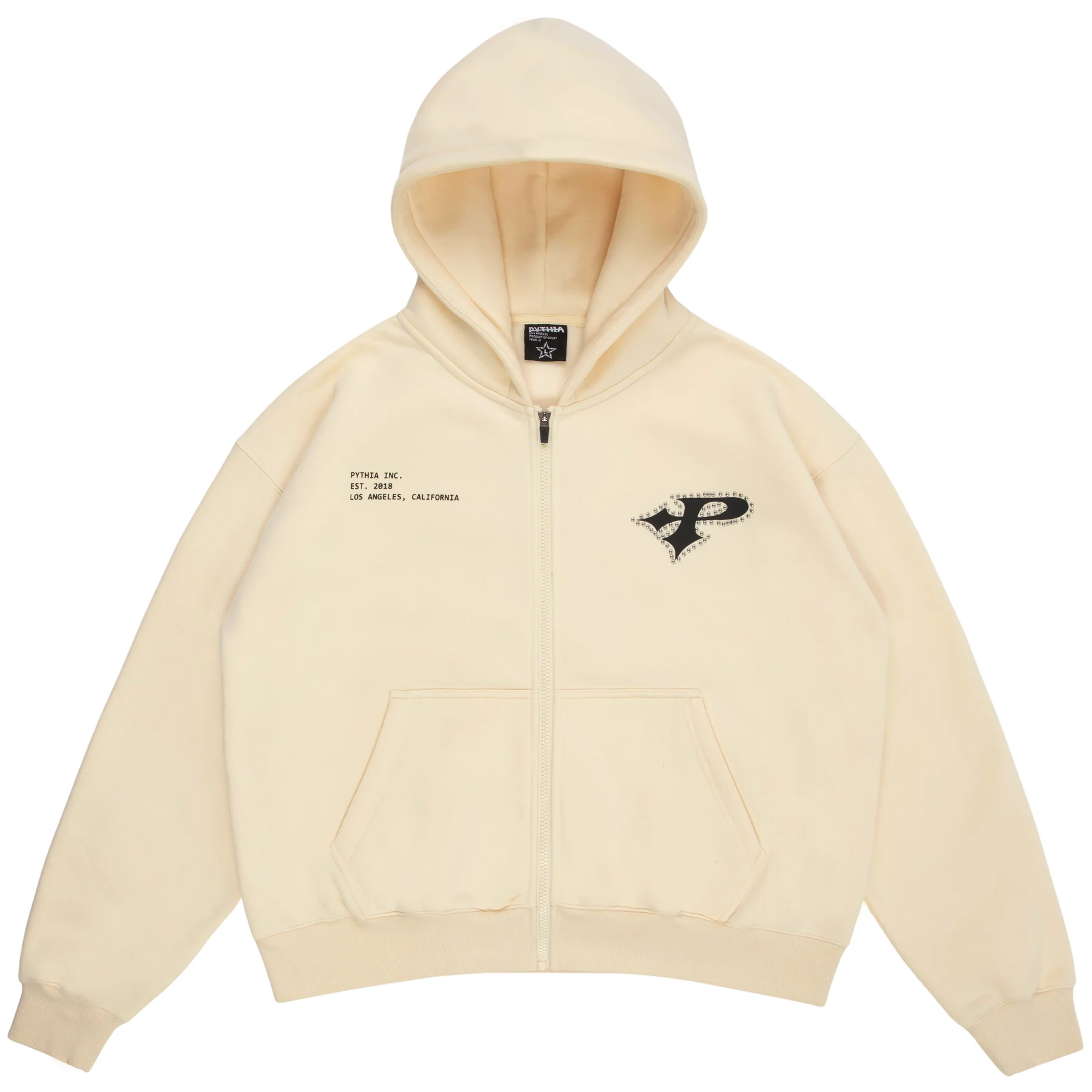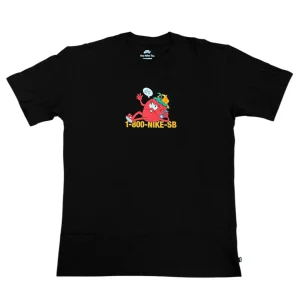There’s a peculiar power to restraint. In a cultural moment saturated with high-decibel design—where logos roar and silhouettes compete for shock value—the quiet, deliberate elegance of the John Varvatos Spring ’25 Cordova Jacket feels like a revelation. It doesn’t scream for attention; it earns it. And that, perhaps, is its most radical act.
This is not simply a garment. It’s a meditation on tension: between texture and polish, utility and elegance, aggression and softness. From its lambskin leather collar to its gunmetal zipper, every element of the Cordova Jacket seems to issue a subtle provocation: What if modern masculinity wasn’t loud, but considered? What if strength wasn’t brash, but composed?
Rendered in a twine hue—somewhere between bleached stone and driftwood—the color alone subverts seasonal expectations. Spring, usually the domain of pastels and florals, rarely leaves room for this kind of stoic minimalism. Yet in the muted glow of the Cordova, one finds not drabness but dimension. There is a painterly quality to the tone: not beige, not ivory, but something lived-in and literary. It evokes old books, vintage record sleeves, Mediterranean sand at dusk.
The body of the jacket is a finely engineered wool blend, and here Varvatos draws from the centuries-old tradition of menswear tailoring. Yet it’s the use of abstract textured bouclé that truly disrupts expectations. Bouclé—typically associated with women’s suiting and haute couture jackets à la Chanel—is reinterpreted here with quiet irreverence. Its tactile surface draws the eye in for closer inspection: a landscape of loops, nubs, and depth. It adds softness to the structure, a whisper to the jacket’s architectural line.
The contrast comes in the form of sleek lambskin leather accents, applied with precision to the collar and pocket trims. This detail does more than introduce contrast—it delivers tension, the kind of push-and-pull that defines compelling design. Leather, with its mythology of rebellion and edge, tempers the bouclé’s delicacy. Together, they suggest a dual identity: poet and fighter, monk and motorcycle rider, old soul and modernist.
It’s worth noting the restraint in embellishment. Rather than relying on overt branding or unnecessary ornamentation, Varvatos allows hardware to speak the language of confidence. The jacket is fastened with a gunmetal zipper—a detail that catches the light without courting it—and brushed metal pocket snaps, which contribute to a utilitarian undertone. These touches feel more like instruments than decorations, precision-crafted and meant to be handled.
Inside, the Cordova Jacket is lined with premium Italian fabric, a finishing flourish that speaks volumes to the wearer even if it’s never seen. This inward luxury, this emphasis on unseen quality, reinforces the notion that refinement begins not in what is shown, but in what is known. It is a jacket made for the man who doesn’t require performance to establish presence. It is an object of intimacy, not spectacle.
Fit, as always, matters. The Cordova comes in a regular-fit silhouette—a term that might suggest neutrality or compromise in other contexts, but here feels exact. It is the midpoint between tailoring and ease, designed to graze the frame without restricting it. It suggests structure without stiffness. The arms move easily. The hem sits with intent. There is no sag, no pull, no overt statement of athleticism or fragility. Just balance.
In the broader trajectory of John Varvatos’ design language, the Cordova Jacket functions as both continuity and evolution. Varvatos has always trafficked in the romanticism of the rebel: aging rock stars, desert mystics, nocturnal poets. Yet this piece suggests a more mature rebellion, one that eschews chaos for clarity. It is not interested in youthful bravado. It’s interested in becoming timeless.
The jacket’s material and mood echo an appreciation for craft that verges on the architectural. Like a well-worn building in a modern city, it speaks both to permanence and reinvention. This is not fast fashion—it is a garment built for longevity, both in terms of quality and aesthetics. Five years from now, it will look just as relevant, if not more so.
There is something almost cinematic about the Cordova Jacket. One could imagine it worn by a protagonist in a modern noir: understated, complex, hard to read. Or perhaps it belongs in a Wim Wenders frame—billowing in slow motion against a ghostly sky. Either way, it invites story, not spectacle.
And in that lies its power. The Cordova Jacket is not about dominating the room; it’s about changing its temperature. It doesn’t provoke with flamboyance but with refinement. It compels without courting. It’s not the life of the party—it’s the stranger people leave the party talking about.
In an era where fashion often panders to algorithms, the Cordova Jacket feels like an object of resistance. It doesn’t want to go viral. It wants to be worn. Lived in. Inhabited like a second skin or an architectural extension of the self. It asks nothing more than for the wearer to meet it halfway, to bring their own interiority to the surface.
To call this merely a spring jacket would be reductive. It is, instead, a philosophy rendered in thread and texture—a belief in the quiet power of intentional design, and in the enduring magnetism of restraint. With the Cordova Jacket, John Varvatos doesn’t just offer a piece of clothing. He proposes a new way of moving through the world: quieter, deeper, sharper.
And in that, perhaps, lies the true artistry—not just in how the jacket is worn, but in what it lets you become.
No comments yet.

